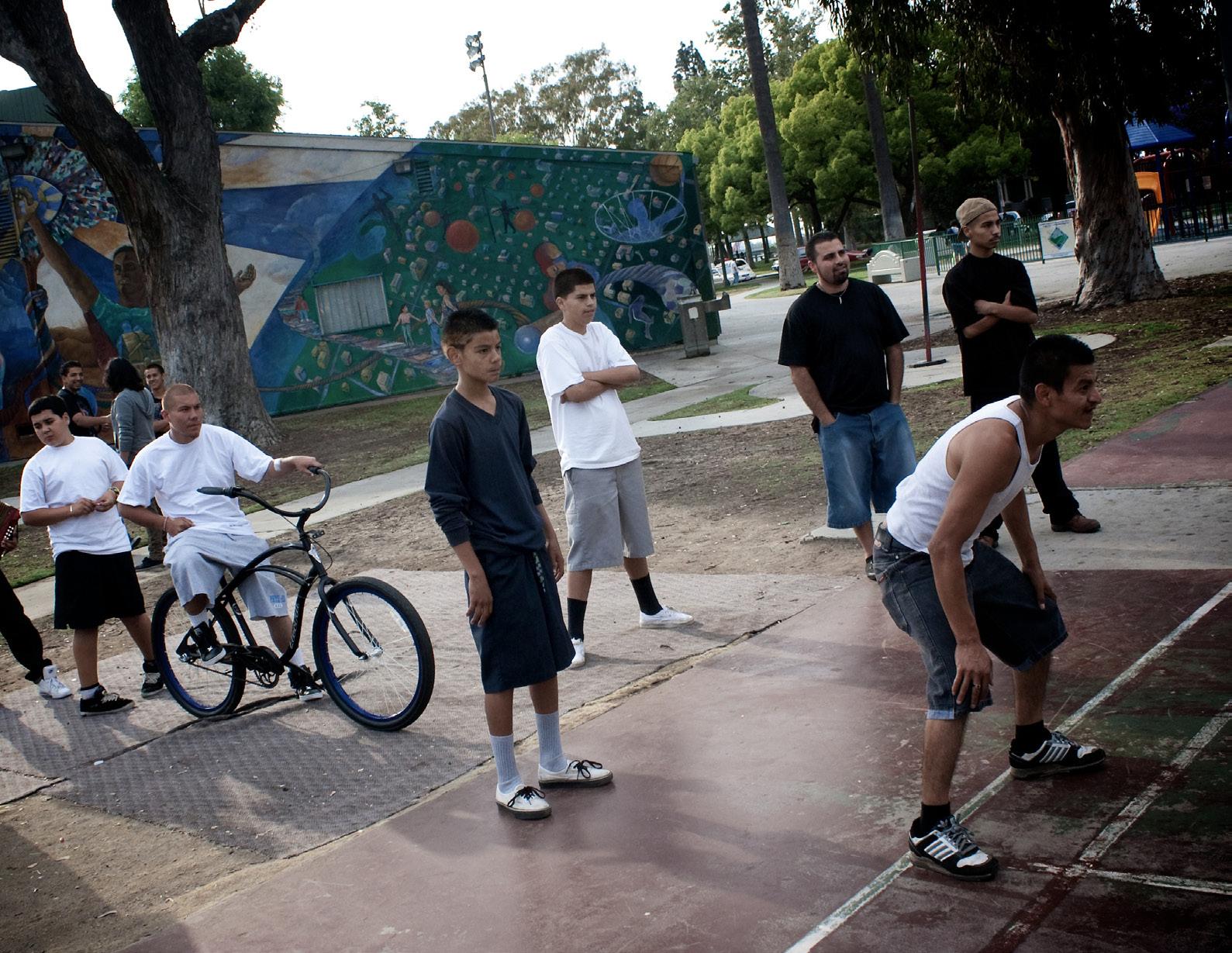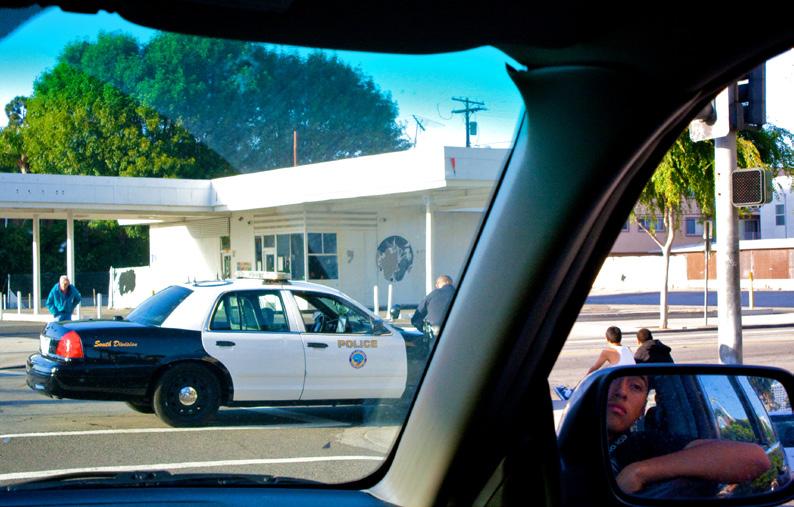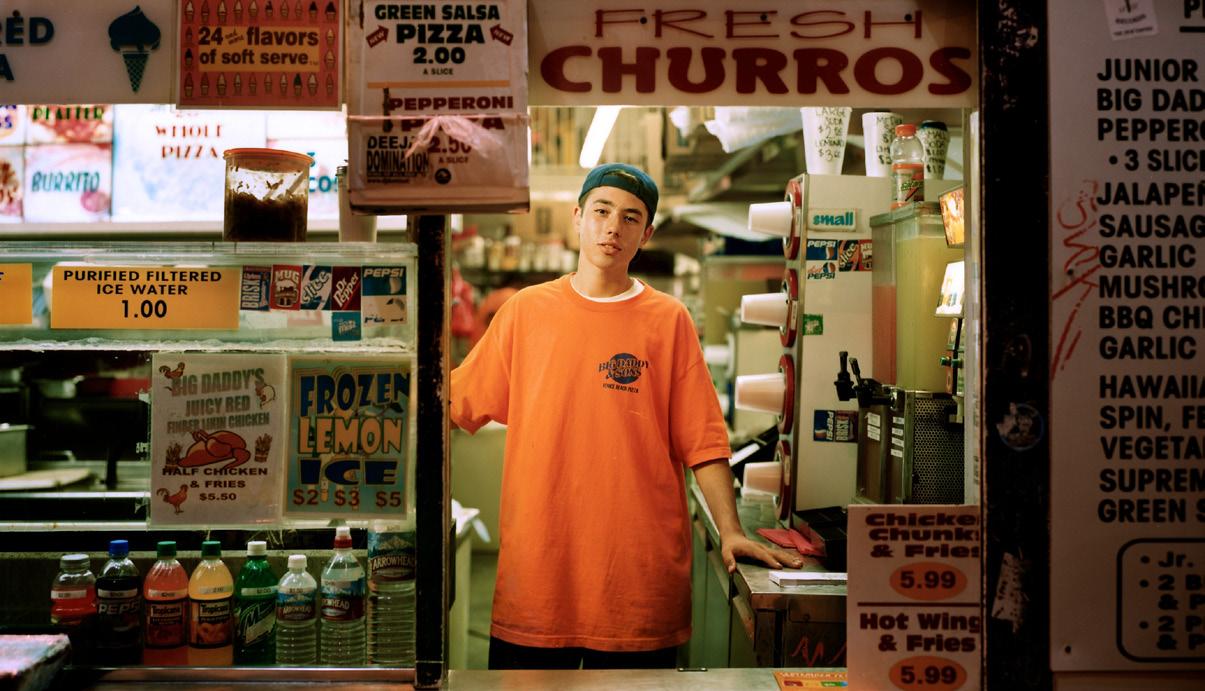
13 minute read
L.A. Needs Its Young Men
In the coming decades, an increasingly diverse Los Angeles will need its young men—all its young men, not just the most privileged—to take their places in society and work to build the economy, educate the next generations, preserve the environment, and improve the lives of all Angelenos. As we rebuild our local and national economies, it’s essential that we stop squandering our human capital. L.A.’s young men—all its young men— are assets to be treasured.
Many Americans are feeling the effects of the crash of the financial system and the resulting years of job losses and cuts to safety-net programs. But hardest hit are low income boys and young men of color. A comparison of the health and welfare of different groups of people in Los Angeles County (and indeed in California and the nation as a whole) puts boys of color at the bottom of nearly every positive indicator. Low-income and young men of color have the lowest life expectancy rates, highest unemployment rates, fewest high school and college graduates, and most murder victims.
Why are these youths enmeshed in such crisis? Researchers have been studying the problem and have connected the dots. The harsh conditions faced by residents of low income communities and communities of color are well documented, and by nearly every measure, young males in these communities are the hardest hit. Already facing higher unemployment rates than other groups, these boys are caught in a no-man’sland between the “jobless recovery” that leaves them on the fringes of society, and a fear-ridden political climate focused on “security” that has resulted in laws that encourage racial profiling. The result is a web of school, social service, law enforcement and workplace policies that punish rather than nurture African American, Latino, and Asian American/Pacific Islander boys and young men. It is time to face up to the cost paid by every sector of our society for the continuation of the present, unjust path. Rather than pooling our resources to maximize human potential, we are spending wildly on such harmful practices as mass incarceration. By failing to improve the lives of boys and young men of color, we not only ignore the fate of nearly half of L.A.’s adults of tomorrow, but also diminish everyone’s quality of life today.
In the past, young Angelenos have faced explicitly racist public policies and practices. Specific historic examples include the forced “conversions” of Native American youth by missionaries, the exclusion of Chinese workers from trade unions, the banning of African American girls from nursing schools, and the routine beatings of Latino youth during police interrogations. Today, our laws are supposed to be “race neutral” and our practices non-discriminatory. But in recent years, researchers have found that many government policies and practices—i.e., city, county and state laws as well as accepted procedures by agencies such as the Sheriff’s Dept., L.A. Unified School District, or the Dept. of Children and Family Services—are hurting boys and young men of color, even though that’s not what the policies were designed to do. Take, for example, the “zero tolerance” policies put into place in schools in the years after the tragedy of the Columbine school shooting. Such enforcement practices have had unintended consequences. These problematic policies include having large numbers of police on high school campuses, or instantly suspending students for minor infractions. Although supposedly colorblind and intended to increase security and safety, such policies are implemented quite differently in different neighborhoods and are also applied differently to different groups on a single campus
(for example, when there are magnet programs on campus). These practices drive down school attendance rates while increasing dropout rates for boys of color. Similarly, law enforcement practices related to the “war on drugs” vary dramatically from neighborhood to neighborhood in Los Angeles. Significantly higher numbers of Latino and Black youth are at risk of being imprisoned than white youth who commit the same level of infraction. At the same time, youth in low income neighborhoods do not receive equal protection by police from violence as youth in high income neighborhoods, and that affects large numbers of boys of color. Is it a big problem for society when this one group of people is pushed out of school, pushed out of the economy, and pushed out of the voting booth? Is it a big problem if Black, Latino, and Asian American/Pacific Islander boys are unfairly profiled in ways that limit their future success as college students, job seekers, and the parents of tomorrow? It’s a very big problem. According to the California State Assembly Select Committee on Boys and Young Men of Color, 82.7 percent of youth in Los Angeles identify as people of color. Boys and young men of color now represent 42.2 percent of all youth in Los Angeles. It’s about us. All of us.
The status of boys and young men of color is a clear indicator of our region’s health as a society—and it’s a not-very-early warning about what we all, as Angelenos, can look forward to. This is not “their” problem—these problems affect every one of us.
Liberty Hill supports these vital members of our communities—our brothers, our sons, our neighbors, and ourselves—in the quest for better opportunities for health, safety, meaningful employment, and a path to responsible adulthood. We believe that a sustained investment in community organizing in targeted neighborhoods of Los Angeles County can have immediate short-term positive results and can result in institutional policy changes that will improve outcomes for boys and young men of color over the course of their entire lives.
Studies show that many obstacles facing young men in their quest for a healthy, productive life are tied to conditions in specific neighborhoods. These neighborhoods are marked by concentrations of low income families and the failure of private and public institutions to provide either equal opportunity or equal protections to the children, especially the boys, who live there.
To achieve long-term change that improves conditions for L.A.’s young men, Liberty Hill is listening to boys who live in neighborhoods where life expectancies are lowest, chances of being a victim of a crime are the highest, and schools are least likely to prepare youth for the challenges of college or employment. The Foundation has been working with L.A. grassroots community organizations focused on empowering boys and young men to define and work for the change they want to see in their neighborhoods, schools, homes, and workplaces.
the hArdest hit: voiCes of los Angeles

There’s a person behind every statistic, a person trying to make his run on a frighteningly uneven “playing” field. Liberty Hill is listening as men and boys of Los Angeles describe their lives.

In 2010 and 2011, Liberty Hill and its partners gathered data on the lives of boys and young men in Los Angeles County. The team reviewed existing literature on health disparities facing boys and young men of color, held focus groups with L.A. County service providers and leaders of community organizations, and conducted interviews with individual key informants. In another phase of research, focus groups were held with adolescents and young men to obtain their feedback on findings and recommendations. In addition, a “landscape analysis” assessed the capacity of the Los Angeles County nonprofit infrastructure that works for positive change in the lives of boys and young men. Following are excerpts of findings on the status of African American, Asian American/Pacific Islander, and Latino boys and young men from recent studies published by nonprofit and government agencies. These telling statistics are juxtaposed with excerpts from transcripts of conversations among focus group participants. These youth understand the challenges they face. Listening to them helps us understand their condition and find the pathway to change. The young men’s comments remind us that each number tells a part of the story of a person— and that these stories are about our brothers, our sons, our neighbors, and ourselves.

We know violence and a culture of incarceration.
• Nationwide, nearly 7% of Black children and 2.5% of Hispanic children have a parent, most often a father, in prison—compared to 0.9% for white children.
• Black men make up less than 9% of L.A. County’s population but nearly 33% of its homicide victims.
“I was sent to juvenile hall at the age of 11 for making stupid decisions. I got kicked out of foster homes and then had a roommate who was bringing drugs in and out of our apartment. I chose to go back to the streets instead of waiting for a drug raid to take place where I was living. Ever since I was little, there have always been a lot of bad things that have happened to me.” “A broken home never solves any problem. I met my dad when I was five years old and I haven’t seen him since. My older brother used to sell coke and would beat me up until I sold coke, got caught, and served three years.”
“One of my mom’s friends got shot and was bleeding to death in front of me and I did not care. That’s when I knew I didn’t care about life and about people.”
“My friend didn’t really want to bang but because of where he lived he had to bang even though he was very smart and good in school. He ended up getting shot. You can’t leave home without worrying about colors you’re wearing, the hat you’re wearing, and even shoelaces.” “One day I was walking down the street in a suit and police officers pulled me over saying that I fit a description. Just looking Latino gives you a higher chance of getting pulled over. Black guys too.”
We sense that we’re being targeted.
• In L.A. County, African American youth have a juvenile felony arrest rate 5.8 times greater than that of white youth; the rate for Latino youth is 2.3 times greater. • Racial profiling by law enforcement officials was experienced by 39% of the Cambodian male youth surveyed in Long Beach. • Children from low income families are four times as likely as privately insured children to be labeled as having a mental disorder and receive antipsychotic medicines. • In a 2007 survey, a quarter of LGBT (lesbian, gay, bisexual, transgender) students who were African American/Black and Asian American/ Pacific Islander and about 30% of those who were Latino or multiracial had missed classes or days of school in the past month because they felt unsafe. In 2009, 84.6% of LGBT students overall reported being verbally harassed, 40.1% reported being physically harassed and 18.8% reported being physically assaulted at school in the past year. “One day I was walking down the street in a suit and police officers pulled me over saying that I fit a description. Just looking Latino gives you a higher chance of getting pulled over. Black guys too.” “What affects me more is people who see me as a bad influence more than as a male or a Salvadoran.”
“I remember being in fourth grade and being put in special education because we were a little badass.” “It depends on the area, the way you dress. The way you walk. The police will stop you, depending on the way you’re walking, if you’re walking like a Mexican.”

We feel like we’re being pushed out of school.
• In L.A. County, just 25% of African American and Latino children are reading at or above proficiency at grade 4. By grade 11, just 20% of African American and Latino youth are proficient at reading. • In L.A. Unified School District, an African American boy attending middle school faces a 32% chance of suspension, versus a rate of 3% for a white girl. • 41% of Cambodian American youth leave school without a high school diploma (compared to 16% of the overall U.S. population).
“You don’t understand how easy it is to get suspended. I watched someone get suspended for spilling juice on the floor in class at Crenshaw.”
“My brother and I take two buses to get to school. We were late. We were wearing our football jerseys and they stopped us outside of school from the bus stop and they handcuffed me and my brother and two other students and they stuffed us in a police car and we had to sit there for an hour or so. Then they took us to the tardy detention center and my mom wasn’t able to leave work to pick us up until two. To play a game you have to attend four classes and so I couldn’t play. I wasn’t trying to miss that game because they really needed me. And Fridays at my school are days where they give tests and I missed all that because I was stopped by a cop on my way trying to get to school.” “Teachers are not available after school. My mother and father didn’t get an education so they can’t help me, the material is too new for my grandmother so she can’t help me and the tutoring system is not great—tutors are not that smart and the good tutors that I do need I cannot afford. Then when I don’t do well on the test, my teachers just say I should have studied harder.”
“I have gotten two tickets for being late. Both times I was right near the entrance of the school. The reason I was late is because I couldn’t afford the 605 bus and I had to walk.”
We want jobs.
• Of the 10 metropolitan areas nationwide with the highest Hispanic unemployment rates, five are in California: Fresno, Bakersfield, Riverside, San Francisco, and Los Angeles. • Over the next 40 years, Latinos will account for more than two-thirds of the U.S. population growth. Yet in November 2011, Hispanic youth unemployment stood at 31.8%.
• In 2011, the unemployment rate for African American youth rose to over 45% and remains above 40%, compared to 23% for overall teenage unemployment. “If my friends in gangs had jobs, I know for a fact they would not be living the gang lifestyle.”
“I didn’t have any positive Black males I could pattern my life after. It was clear at a young age that you don’t pattern your life behind athletes because you don’t know them. Only my grandparents were not connected to a gang. Growing up I was exposed to the underground economy of selling drugs.” “When it comes down to looking for work I feel, depending on the type of work you want to do, being Hispanic makes finding office work very difficult. I went to school for business…I have a felony on my record from drugs. Having a record is the number one setback in finding a job.”
“It has to do with drugs. You could be going to school or selling drugs. I dropped out of school and started selling drugs in 11th grade. Now I realize that unless you’re a king pin, it doesn’t stay forever. I realize unless you have a GED or high school diploma, you can’t get no kind of job.”
“A lot of our families grow up in poverty. A lot of my friends have parents that don’t have jobs. As hard as it is for a Black male to get a job in L.A., these are the things that play a big role in the breakdown of Black families.”
“My brother Christopher used to take me everywhere. Every time he came home, he came home with a new bike and would tell my mom he was fixing it for someone else.”


